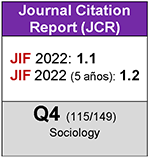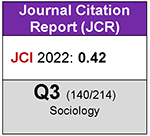The third revolution of modernity; the reproductive revolution
DOI:
https://doi.org/10.5477/cis/reis.122.89Keywords:
Reproduction, Family, Gender, Women, Mortality, Survival, Demography, Demographic Theory, Modernity, Sexuality, FeminismAbstract
A third «revolution» alongside the better known economic and political ones has been vital to the rise of modernity: the reproductive revolution. This comprises a historically unrepeatable shift in the efficiency of human reproduction. As well as clarifying the key role of demographic developments in the rise of modernity, the concept of reproductive revolution offers a better way to integrate sociology and demography. The former has tended to pay insufficient heed to sexual reproduction, individual mortality and the generational replacement of population. Some key results of the reproductive revolution are discussed. As well as reviewing some empirical evidence for the concept, its implications for debates on the demographic transition, falling fertility, the social regulation of sexuality, the decline of patriarchy, rise of reflexive indentity, «population ageing» and family, are briefly discussed. The article discusses these ideas in relation to arguments about the family and fertility initially proposed by Davis (1937).
Downloads
Downloads
Published
How to Cite
Issue
Section
License
Copyright (c) 2024 Revista Española de Investigaciones Sociológicas

This work is licensed under a Creative Commons Attribution-ShareAlike 4.0 International License.
Permite Compartir — copiar y redistribuir el material en cualquier medio o formato, Adaptar — remezclar, transformar y construir a partir del material para cualquier propósito, incluso comercialmente.








